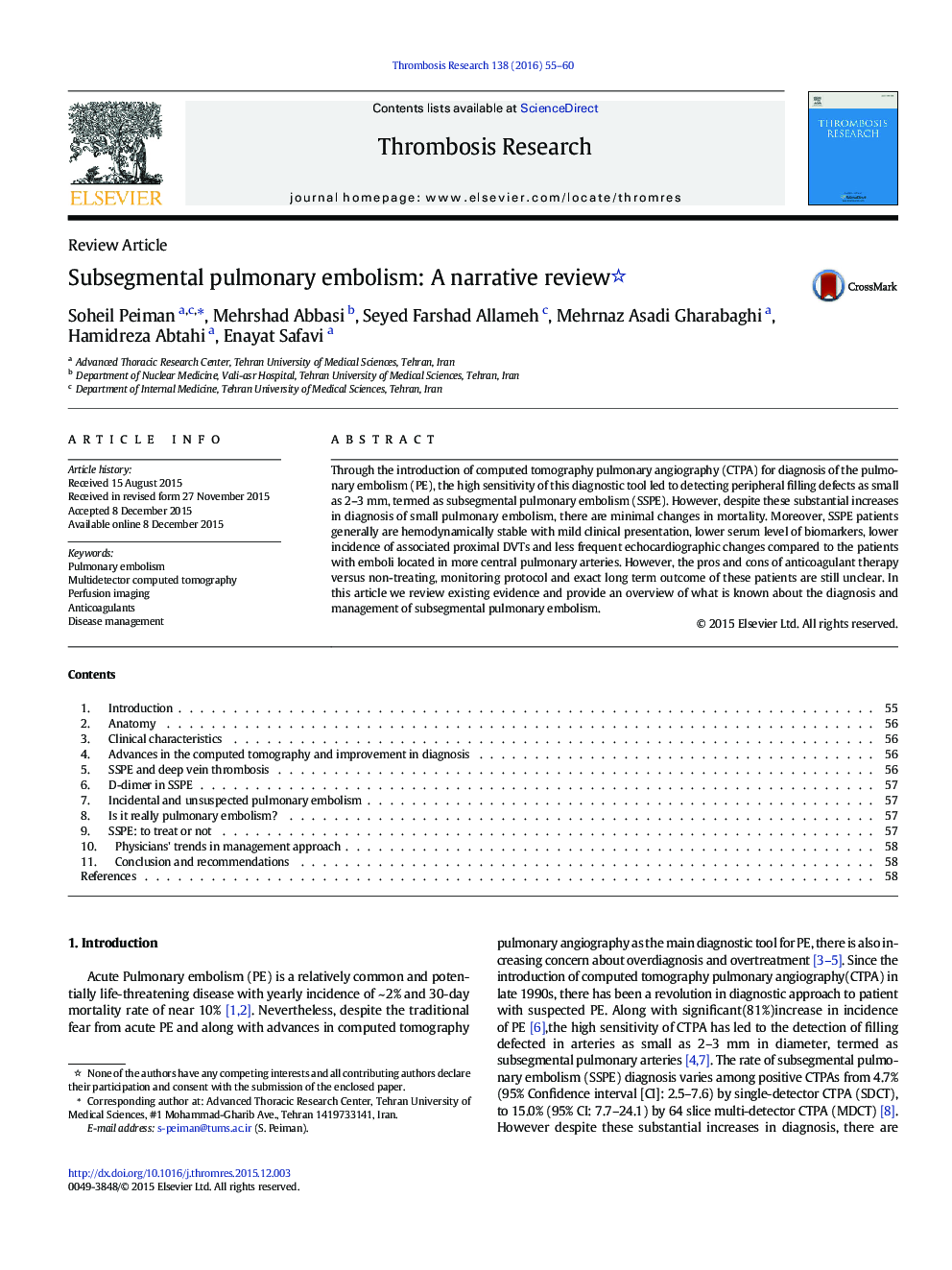| Article ID | Journal | Published Year | Pages | File Type |
|---|---|---|---|---|
| 6000659 | Thrombosis Research | 2016 | 6 Pages |
â¢With advances in the CTPA technique the rate of SSPE diagnosis is increasing.â¢SSPE has mild clinical presentation and lower paraclinical derangement.â¢There is no strong evidence regarding the benefit of anticoagulation in SSPE.â¢The report of SSPE should be reinterpreted by an expert radiologist.â¢It is probably safe to withhold treatment in isolated SSPE with no risk factors.
Through the introduction of computed tomography pulmonary angiography (CTPA) for diagnosis of the pulmonary embolism (PE), the high sensitivity of this diagnostic tool led to detecting peripheral filling defects as small as 2-3Â mm, termed as subsegmental pulmonary embolism (SSPE). However, despite these substantial increases in diagnosis of small pulmonary embolism, there are minimal changes in mortality. Moreover, SSPE patients generally are hemodynamically stable with mild clinical presentation, lower serum level of biomarkers, lower incidence of associated proximal DVTs and less frequent echocardiographic changes compared to the patients with emboli located in more central pulmonary arteries. However, the pros and cons of anticoagulant therapy versus non-treating, monitoring protocol and exact long term outcome of these patients are still unclear. In this article we review existing evidence and provide an overview of what is known about the diagnosis and management of subsegmental pulmonary embolism.
